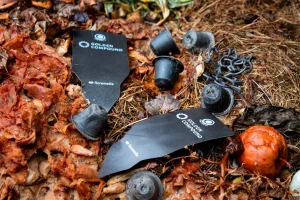3D printing, also known as additive manufacturing, has revolutionised the way products are made over the last few decades. But how did it all start? The origins of 3D printing date back to the 1980s, when Chuck Hull developed the first patented stereolithography process. This technology made it possible to create three-dimensional objects by depositing material layer by layer. Since then, the technology has evolved rapidly, finding numerous applications in industry, medicine and even art.
How does 3D printing work?
At its core, 3D printing is based on building an object layer by layer. This is based on a digital template, usually in the form of a CAD file. The machine applies material, be it plastic, metal or even concrete, layer by layer. The most common processes are
- Fused deposition modelling (FDM): Melting and extrusion of a thermoplastic material.
- Stereolithography (SLA): Curing of liquid resin with UV light.
- Selective laser sintering (SLS): Melting of powders using a laser.
The flexibility and precision of 3D printing makes it possible to create tailor-made solutions and to produce prototypes quickly.
Future developments and challenges
The future of 3D printing is promising: advances in materials science, higher printing speeds and improved print accuracy could see 3D printing become a mainstream method of mass production. But there are also challenges: Printing speed is often still limited compared to conventional manufacturing processes, and the variety of materials remains a challenge. In addition, clogging of the print nozzles or a lack of layer adhesion can affect the quality of the print results.
Our solution: materials for 3D printing
At Golden Compound GmbH, we specialise in sustainable biomaterials. However, not every material is suitable for 3D printing.
Why are materials with natural fibres unsuitable?
Our sunflower hull biomaterials, known for their sustainability, are not ideal for 3D printing. This is because the natural fibres in these materials are 200 to 500 microns thick, which has been shown to clog nozzles. Materials with finer particles are needed for 3D printing applications.
Suitable alternatives from our product range
In order to still be able to offer a sustainable solution for 3D printing, we have other materials in our portfolio that do not require natural fibres:
- GC green 977 MI T25 (certified OK Compost HOME)
- GC green 71 MI T30 (dishwasher-safe and biodegradable)
- GC green 3082 FC95 T13F (certified OK Compost HOME)
These biocomposites are based on our innovative GC green line and could be suitable for 3D printing. They combine good flow properties with easy processing.
Our new highlight: GC green BIO 601
With GC green BIO 601 we have taken another step towards sustainable 3D printing materials. The material is biodegradable and offers optimal processing properties for 3D printing. Combining sustainability and performance, it is the ideal choice for environmentally conscious additive manufacturing users.
3D printing is and will remain a key technology of the future. With our new materials, we are helping to provide sustainable and efficient solutions for this innovative technology. Discover the possibilities with our GC green products - for a greener future in additive manufacturing.




